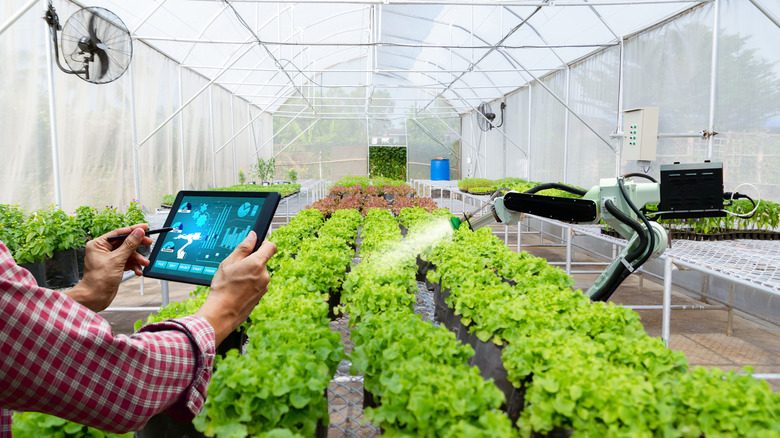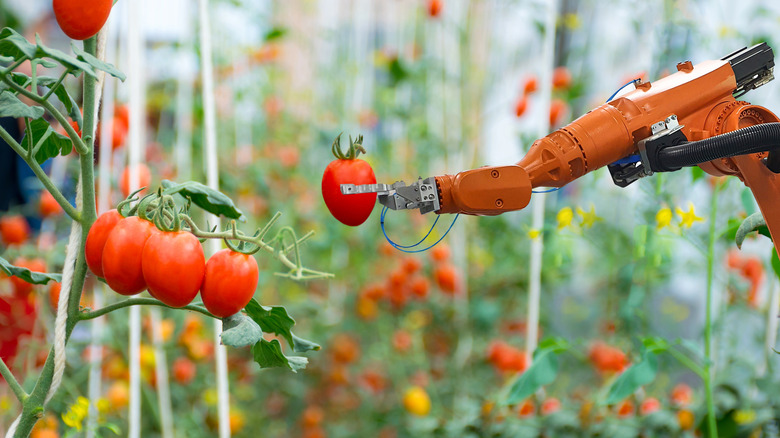The Futuristic Way One Australian Farm Went 'Hands-Free'
Technology has slowly but gradually been integrated into the farming industry to make gathering crops quicker at a greater scale than before. In 2018, it was reported that Panasonic Corporation was testing out a new tomato harvesting robot in Japan (via Panasonic). The robot would harvest tomatoes — determining their ripeness and suitability for harvest based on an image recognition function — at night while farmers were sleeping, only leaving the packing bit to them the next morning, and thus, making the entire process quicker and far more efficient.
Automated farming has come a long way since. Charles Sturt University has announced that it will be partnering with the Food Agility Co-operative Research Centre to build Australia's first "hands-free" farm at the university campus in Wagga Wagga. Per the press release, the farm will use robots and artificial intelligence to make farming an entirely automated and sustainable process. Food Agility's CEO Richard Norton adds that, "It won't be too many years before technology will take farmers out of the field and immerse them in the world of robotics, automation and artificial intelligence."
Per ABC Rural, the "hands-free" farm has been built over 1,900-hectares of land at the university campus at a cost of about $20 million. Keep reading to learn more about how this cutting edge technology operates.
The fully automated farm is already operating commercially
Charles Sturt University's press release states that the 1,900-hectare property will have a vineyard and will be used to grow wheat, barley, and canola crops. The farm will also house cattle and sheep. Farming will be done using automated machines like robotic tractors, harvesters, and drones. Artificial intelligence will be used to gather information on best sowing, dressing, and harvesting practices on the land.
The farm will use sensor-based technology to measure the way in which the soil, plants, and animals all interact with each other. The farm will also employ sustainable farming practices and models as well as measures to manage its carbon footprint. The project will equip farmers with "knowledge and technology in crucial fields like data analytics, geospatial mapping, remote sensing, machine learning and cybersecurity," Charles Sturt University professor Niall Blair added. Business Insider reports that the Australian "hands-free" farm is already operating commercially and trials are being held at night while farmers are sleeping and are away from the property.
Contrary to misconceptions that fully automated farming will largely eliminate farmers from the farming process and will leave them out of jobs, the World Economic Forum found that, while robots and automatics will displace 87 million laborers, it will employ 97 million more, thus creating more jobs than it supplants. Instead of farming in the fields themselves, Business Insider reports that farmers will simply sit behind the desks, managing the automated farming from behind computer screens.

